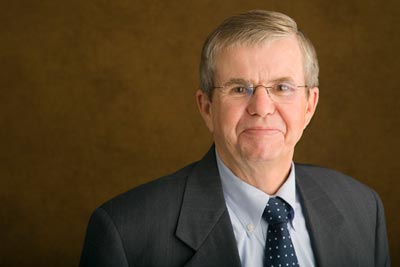By John D. Haeger, President
An interesting issue arose on the way to establishing a technology-based mathematics emporium on the Northern Arizona University campus.
Floor space.
For all the excitement that comes with taking a fresh approach attached to high-powered software, there’s no escaping the bricks-and-mortar reality faced by even the most modern of universities.
Granted, this is not an issue faced by MOOCs and online learning in general, except for the modest capital infrastructure required to operate these modalities.
But the point is that we’re also weaving digital technology into course delivery for those students who live in our residence halls and come to our classes. Don’t they, of all our students, deserve the very best we can offer?
That includes personal contact with faculty, of course. No digital developments will ever alter that NAU hallmark on our Flagstaff campus. Quality contact can take place in the classroom, even if students are sitting at desks and facing the front, just as they have for decades.
And the best does not always mean the latest tool available. It means the latest and most effective.
So adapting a model pioneered by Virginia Tech, we crafted our own plans for the Lumberjack Mathematics Center. The “math emporium” is a proven concept that maximizes the effectiveness of faculty contact time by allowing instructors to be guides and mentors while giving students the freedom to study and advance at their own pace.
The concept was innovative, high-tech—and in need of a location.
We quickly solved the physical challenge by lightly remodeling academic space that had been built in to our new Health and Learning Center. Yes, there was some cost involved, and as with any university campus, multiple claims could easily have been laid to that space.
In the end, though, it met our immediate needs, and we’re fortunate to have had that option available. The benefits are already rolling in. Three sections of first-year math are taught at the center: Attendance is high and achievement is up.
So far, success.
But the exercise raises an excellent point—one that I’m sure is being faced around the country: retrofitting for technology involves much more than cables, computers and software packages.
Equipping ourselves for the next generation of teaching and learning often will require fundamental infrastructure changes. (NAU is experiencing this reality as a partner with the University of Arizona at the Phoenix Biomedical Campus—where the new structure itself invites a rethinking of traditional course delivery—but that’s for a future blog post.) Established campuses will need to be structured to accommodate 21st century education.
Just one more item for the long to-do list as higher ed transitions to a new way of delivering knowledge.
Editor’s note: The above blog first appeared in the Huffington Post on Dec. 14, 2012



